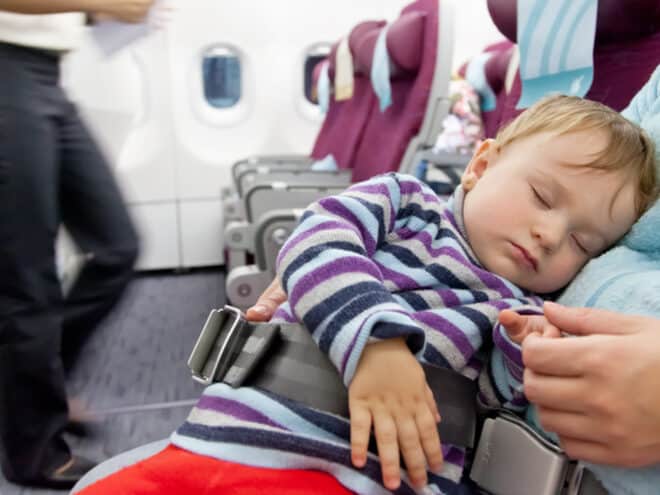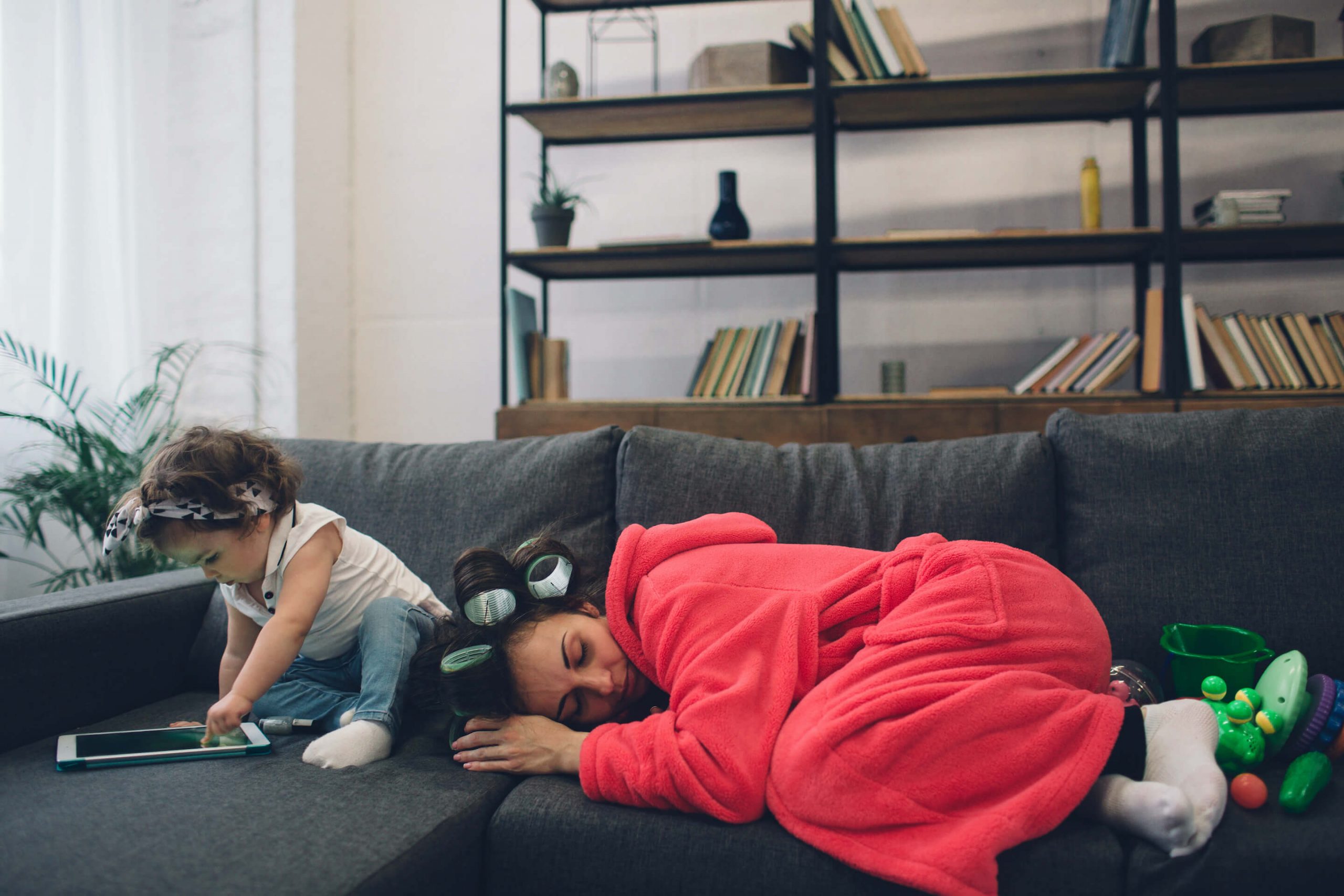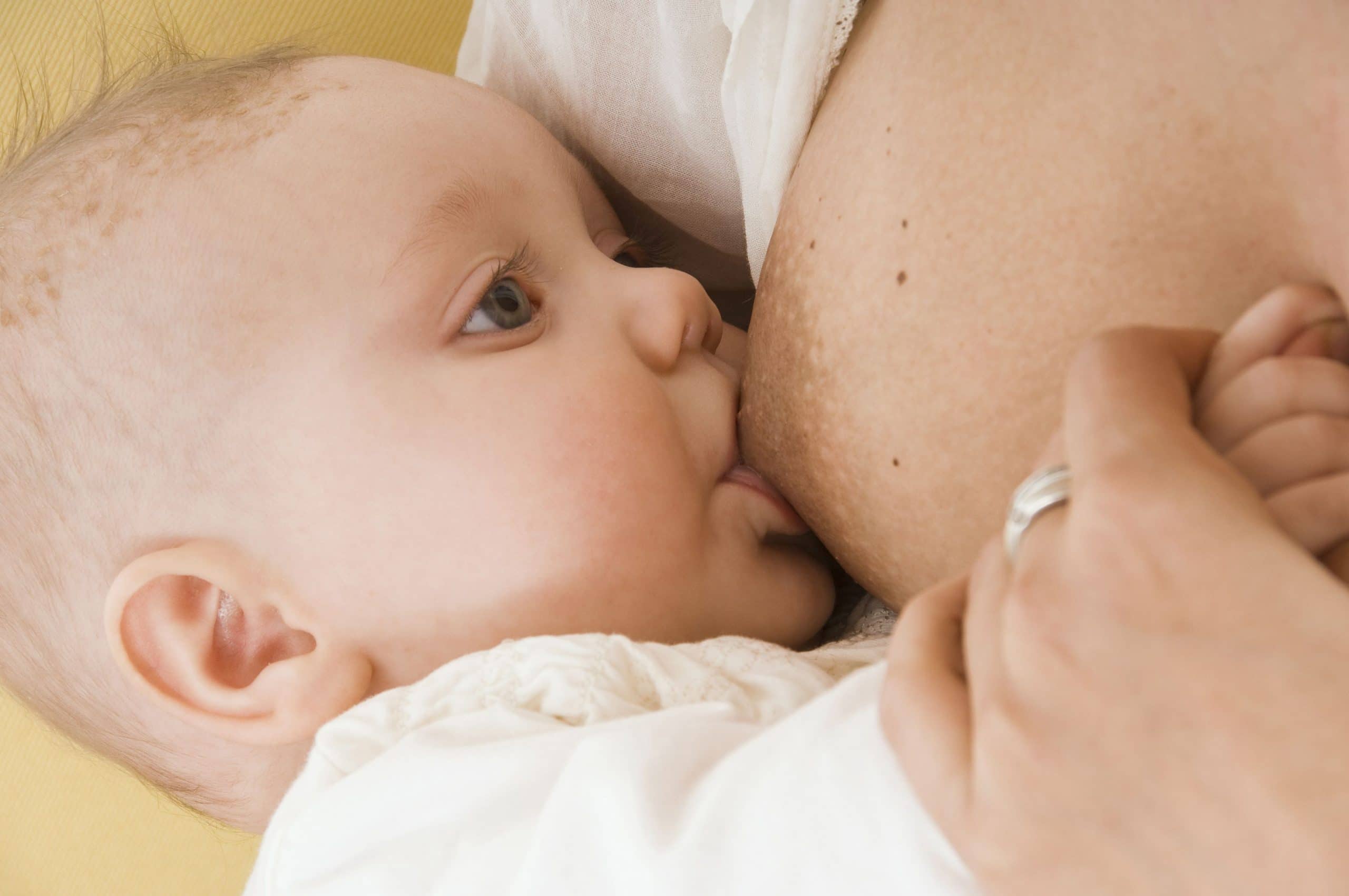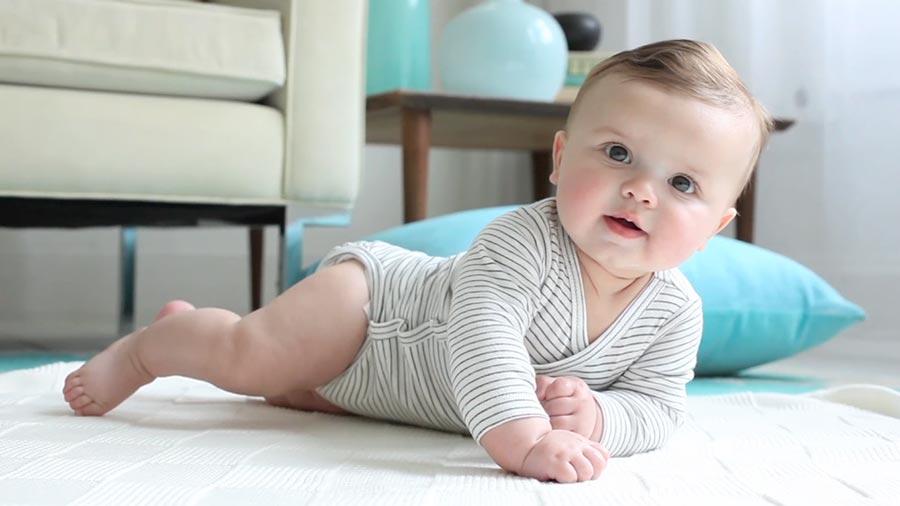Flying with kids is not for the faint-hearted, but with a few tips and tricks, you can totally do it! All you need to do is prepare.
Here are 24 of the most useful tips, hacks, and tricks for flying with kids.
-
Carefully consider your departure time
The time you choose for your flight may be significant. It can be the difference between having an easy flight or a hard flight with a child.
Early Morning Flights: Early morning flights are usually less crowded. There are also fewer delays at takeoff and landing. If you go on an early morning flight, your baby/toddler might still be tired and simply go to sleep once you board.
Sleepy Time Flights: Consider scheduling your flight close to your child’s nap time. If you have the option of choosing a departure around the time your child goes to sleep anyway, grab it. Instead of having a hyper child who you need to entertain, you’ll have a sleepy child.
Helpful advice from one mom to another – if your baby/child is sleepy, let them go to sleep as soon as it is possible. For example, if you are driving to the airport and your little one nods off, let them. You may yearn for the peace you will get from a sleeping child during the flight, but depriving your child of resting when it is needed can (and probably will) backfire spectacularly! Over-tired children don’t just go to sleep—they are difficult to settle down! You do not want to be the mom with the over-tired child, especially not on an airplane.
-
If you are traveling with a baby, book the bulkhead seat
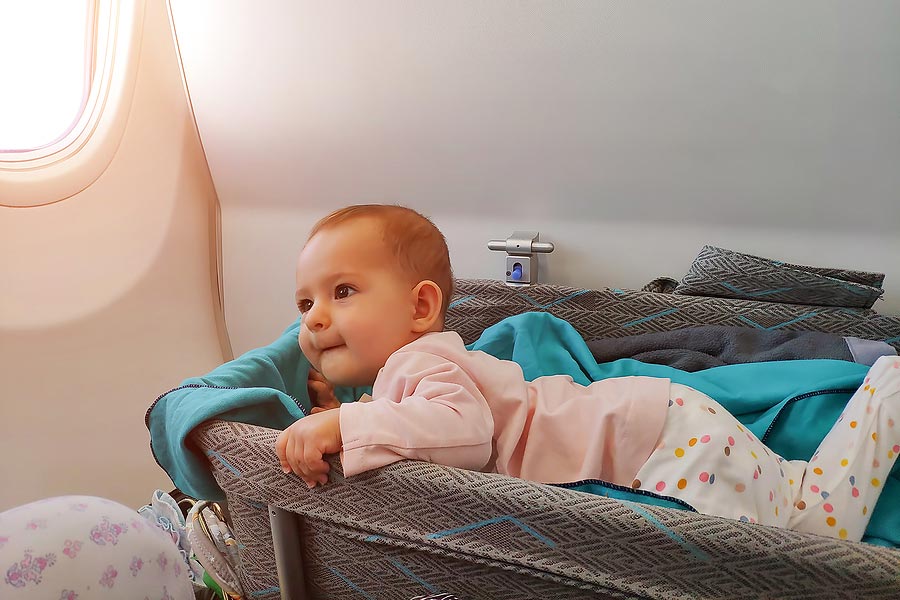
The bulkhead seat is sugar and spice and all things nice for parents traveling with babies. It is a seat where they attach a bassinet for your baby. However:
- The bulkhead seat is usually available on a first-come-first-serve basis, so book early. If you are traveling with a baby, they will not automatically give it to you—you have to ask for it;
- Parents need to take down the bassinet during taxi and takeoff, landing, and turbulence. This is a little inconvenient, particularly if you need to wake your baby from a nap, but it’s a small price to pay for the benefit you receive.
- There are weight restrictions for the bassinet. The restrictions vary from airline to airline but it’s generally around 22-24 lbs.
-
Avoid long layovers
Long layovers are the bane of every mom’s existence. If at all possible, try to avoid it. Long layovers will drain you and they could lead to meltdowns.
-
Avoid short connection times
If you are normal, you probably want to get the flight over and done with as soon as possible. To do that, you’re probably thinking of short connection times. However, if you are flying with kids, you will want to avoid them. Here’s why:
- Deplaning with little ones takes longer. You’re packing up, trying to ensure nothing is left behind. The whole process takes longer than you may think.
- If you are traveling with a baby, you probably have a stroller. If you checked your stroller at the door of the airplane, you will now have to wait for it to be returned to you at the door. If you are lucky, it may be waiting for you when you leave the aircraft, but often, you’ll have to wait. Once you have your stroller, you’ll have to get your child strapped in. All this takes time and will add stress if you have a short connection time.
- When you are finally in the terminal, chances are excellent that you will have to find a restroom to freshen up or change diapers.
Delays like these are normal if you are flying with kids, so you need to give yourself enough breathing room between connecting flights. If not, you will be stressed out as you rush from terminal to terminal.
-
Pack an inflatable footrest
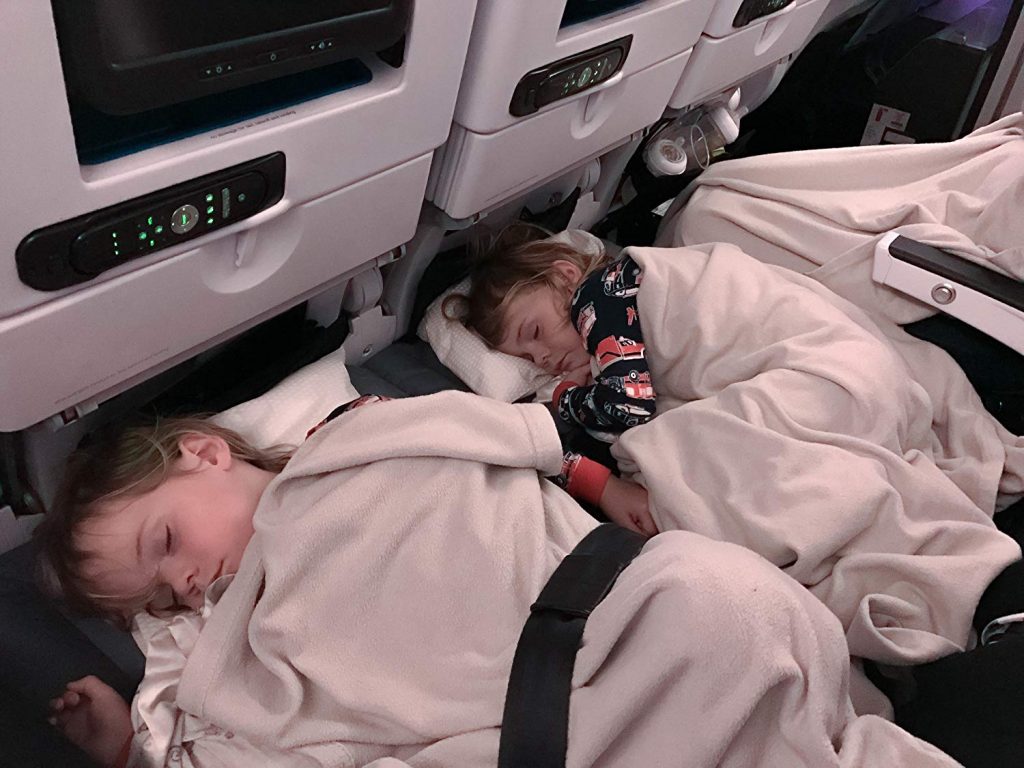
If you are flying with kids, create a makeshift bed for them using inflatable footrests.
Often toddlers and babies will get antsy because they’re tired and they can’t sleep comfortably on an airplane. Solve that problem by placing an inflatable footrest in the open leg space between your little one’s seat and the seat in front of it.
-
Consider a baby carrier or an easy to fold, compact stroller
Imagine moving through the airport with a baby on your hip and your luggage! It’s possible, but it will drain you!
If your baby is very young, consider a baby carrier. Being carried calms babies and keeps them happy. Also, if you have a baby carrier, you can pull luggage because you have two free hands.
For bigger babies or toddlers, you may want to go with a stroller that is compact and easy to fold. Umbrella strollers are very popular for traveling but with so many options nowadays, many fancy strollers are equally compact and easy to fold.
-
Tell toddlers and older kids what to expect
If little ones know what to expect, they are more likely to go with the flow. Take the time to explain to your kiddo what will happen and how you expect them to behave.
Unless you take the time to explain it to your child:
- He/she will not understand that everyone on the aircraft is stuck and can’t leave until the airplane lands.
- She/he will not understand that running around or speaking in loud voices is frowned upon in an airplane;
- When things are not as they usually are at home, your little one is likely to throw a tantrum with no regard for other people on board;
-
Carefully consider the early boarding option
Many airlines offer early boarding if you are flying with kids, but there are pros and cons to taking them up on the offer.
Pro: You can get settled in, select the best space overhead for your carry-on, and settle your children down before everyone else boards. However,
Con: If you have a hyper toddler running around the terminal, the extra few minutes might help them get the sillies out before you board.
-
Dress in comfortable layers
Whether you are flying across the ocean to a different time zone and season or not, be prepared for changing temperatures on the plane. Dress little people in layers so that you can comfortably add or remove layers as needed. Also, avoid belts, zippers, buttons, or anything that could slow down going to the bathroom in time.
-
Pack a change of clothes
Accidents happen when you’re flying with kids, so be prepared for them.
A change of clothes is especially important for babies and children under six years old. Pack your change of clothes in your carry-on so that you have quick and easy access when you need it. Pack:
- a change of clothes for each little in separate ziplock bags. If there is an accident, you can quickly grab the bag instead of sorting through things to find what you need.
- at least 1 top for yourself—if your baby spits up or messes on you, you won’t have to be wet, dirty, or stinky throughout the entire flight.
-
Ensure devices are fully charged
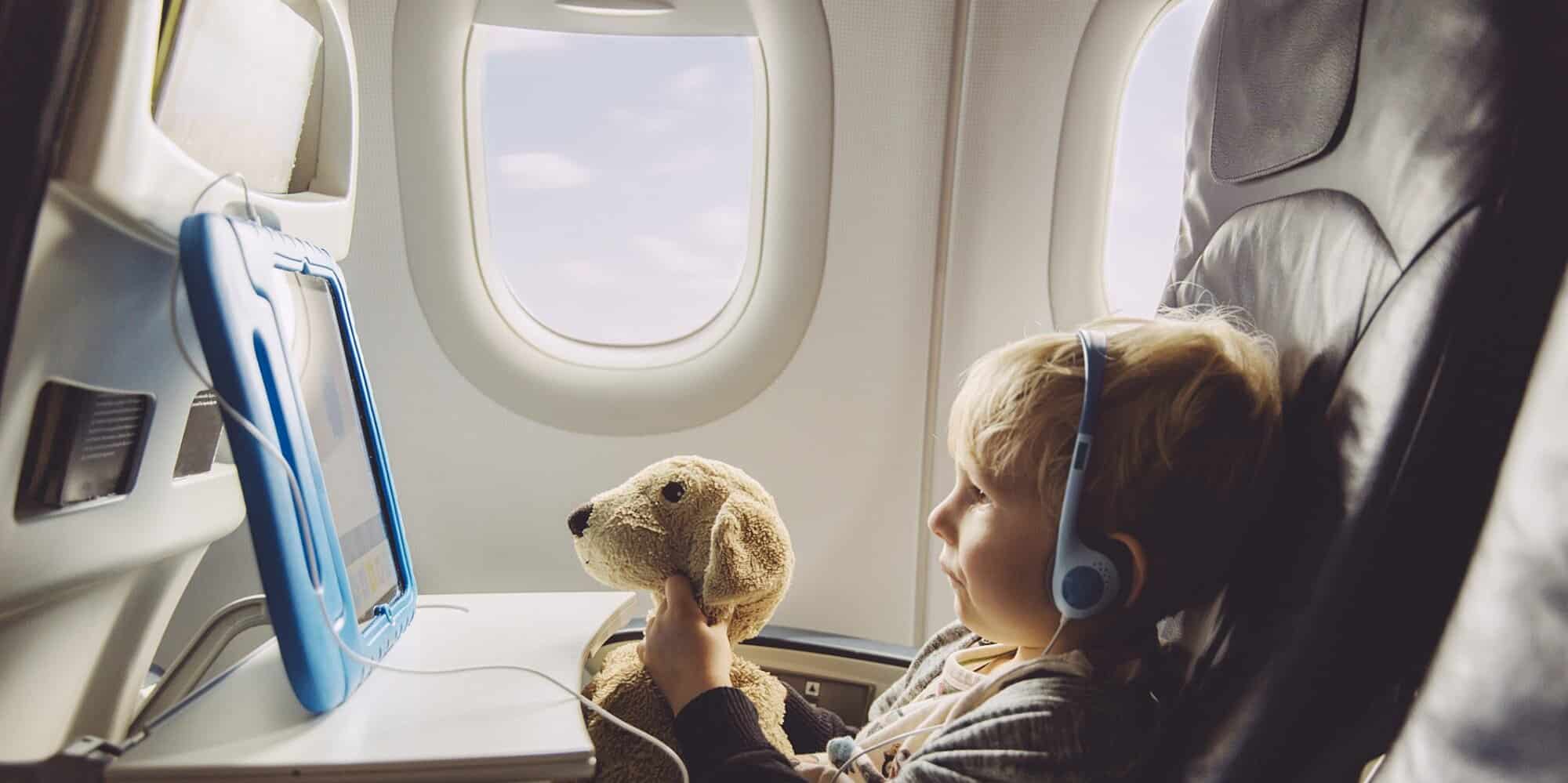
At home, you may be limiting screen time. However, by allowing your child as much screen time as he/she wants, you are giving yourself peace and quiet.
If you are on an international flight, there are usually movies to watch and games to play for kids. However, do not rely on those because they may wear thin. Instead, be prepared and make sure electronic devices are loaded with your child’s favorite games and movies they actually want to see.
Also, pack kid-size headphones so that little one can listen in private.
-
Pack snacks
By having snacks, you can feed your little one when he/she needs it, instead of waiting for mealtime.
If you are on a short flight, the airlines may serve pretzels, peanuts, two cookies, etc. However, if you are flying with kids, you cannot rely on these.
- The snacks may not be enough to satisfy your kiddo, and;
- The snacks may be served later than your child needs.
Hungry children are no fun to deal with, so be prepared when you travel by:
- Packing your little one’s favorite low-sugar snacks;
- Making sure it is easily accessible by packing them in your carry-on or in your personal item.
If you are on a long-haul flight, snacks are just as important because kids don’t always like airplane food.
-
Consider a car seat for baby
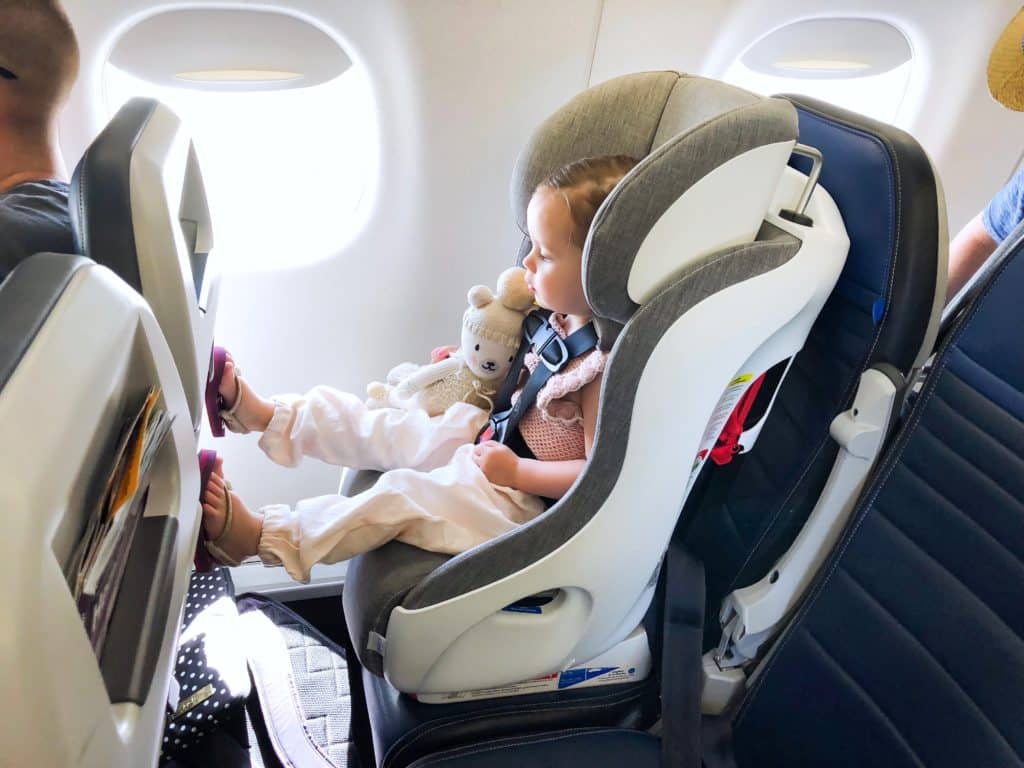
If your child is under two, he/she can travel as an “infant in arms.” There is a charge, but you are not paying the full cost of a seat.
Traveling with an “infant in arms” is completely doable, but after a few hours, it can get very uncomfortable.
If you can afford to do so, buy a seat for your baby. Bring a light car seat that is suitable for use on an airplane. They are usually narrow and light so that you can comfortably carry them through the aisles.
-
Use your mileage upgrades carefully
If you have the points, you may be considering upgrading yourself and your child to first class. However, first-class seats are expensive, and first-class passengers will not look kindly upon a rowdy toddler or a crying baby in their midst. In the economy class, people are way more understanding.
A smart way to use your mileage is to buy a seat for your baby. Although babies under two years can fly as “infants in arms”, your life will be a lot easier if your baby can have his/her own seat. You will need to travel with a car seat. This can be a bit of a hassle as you move through the airport, but the benefit is that you’ll have your own car seat if you are renting a car.
-
Pack ziplock bags
Ziplock bags are heaven-sent when you are traveling with children. If your baby has a blowout, the soiled clothes can be sealed in a ziplock bag.
Ziplock bags are not just useful for babies. Toddlers and preschoolers also have accidents, and Ziploc bags can seal all those messes too.
-
Pack surprises and/or activities
If you’re flying with kids, you will need to keep your child entertained. There is no need to go overboard, and this doesn’t need to be expensive either. Simply stop by Target or your local Dollar Store and pick out a few things that may keep them busy. Here are a few ideas:
- Little books, window gel stickers, age-appropriate toys, etc.
- Avoid toys that come with lots of little pieces, like legos.
- For drawing, look for rectangle or triangle crayons because regular crayons will roll off the tray table.
-
Reserve kids meals for long-haul flights
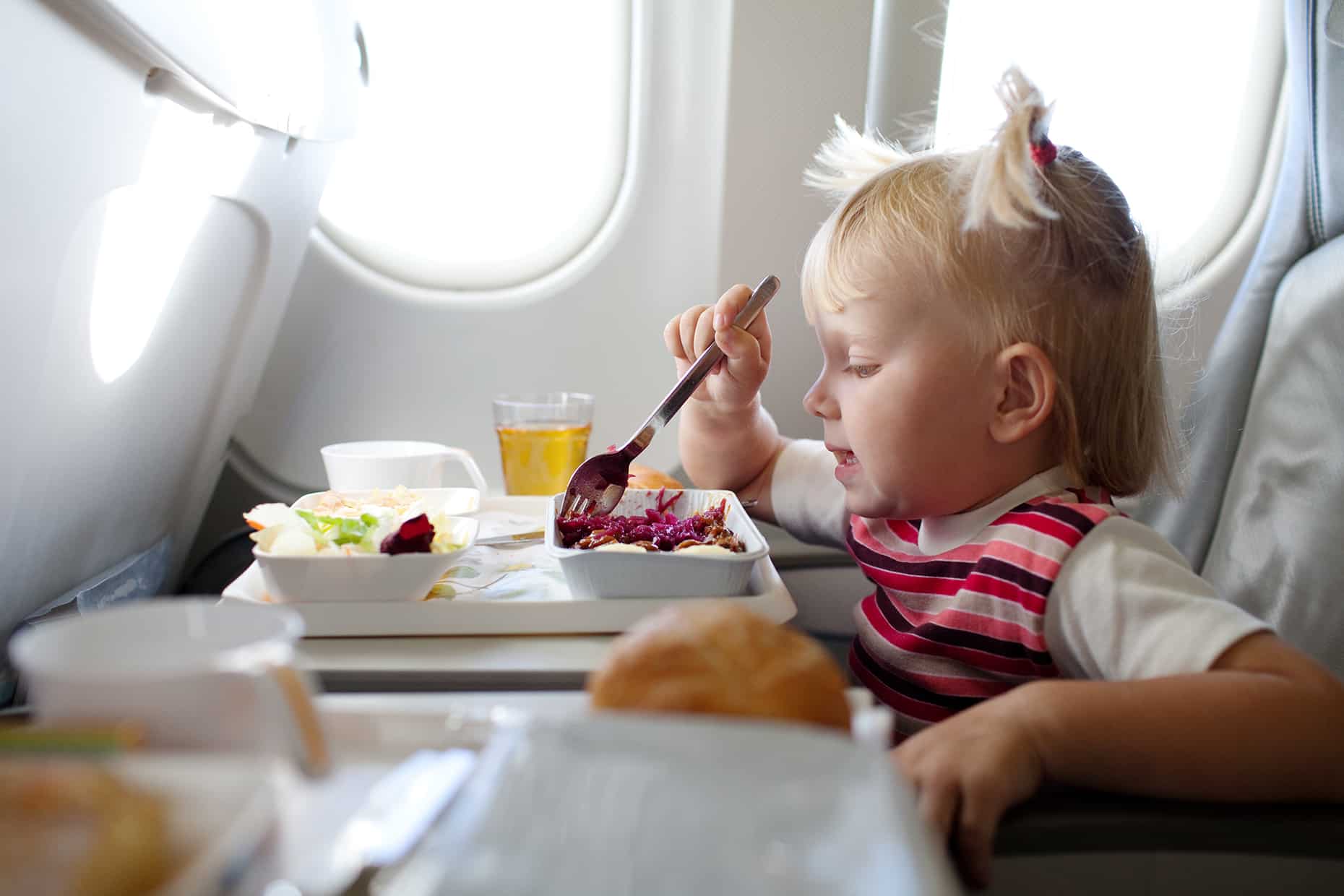
Picky eaters may not want to eat the adult airplane food, but they may eat the kid’s meals. If you are going on an international (or long-haul) flight, be sure to book the meal ahead of time.
Also, kid’s meals are served first! This is an awesome benefit because you can get your little one started or feed him/her before your food comes.
-
Consider bedwetting underwear / pull-ups
If you have a child who is out of diapers but occasionally wets the bed, get them to wear pull-ups if you are flying overnight.
-
Pack what you need, then stop
You may be tempted to over-pack, but it is important to keep in mind that you have to manage all the stuff you’ve packed and your kid(s). Be sure to pack only what you can manage.
For your carry-on, you are packing a change of clothes, snacks, electronic devices, activities. A few extras to consider are:
Babies
- A comfort item like a lovey or a pacifier. (If your baby needs pacifiers, pack more than one in case it gets lost. Better yet—use a pacifier clip);
- Sanitizing wipes;
- Diapers, wipes (One diaper per hour of travel is recommended for babies under six months);
Toddlers and older kids
- Tablets or smartphones, charged and loaded with your child’s favorite shows, movies, and games;
- Kid size headphones. If you have more than one kiddo but only one tablet, use a headphone splitter so that they can share the device;
- An activity you think your little one will like. For example, art supplies (a small box of crayons and a small coloring/activity book should be sufficient);
- Ziplock bag or plastic bags for trash;
- Water—you can pack collapsible water bottles then fill them once you get through security;
- Low-sugar snacks like Cheerios, pretzels, crackers, nuts, string cheese, etc.;
- Pull-ups for international/long-haul or overnight flights;
- Hand sanitizer and wipes.
-
Relax the rules
- Screen time limits. The flight is perhaps not the time to be watching the clock. Children (like everyone else on board) get bored, and they will need something to keep them occupied.
- Candy consumption. If your kiddo would normally bounce off the wall after eating a lot of candy, the airplane is definitely not a good time to offer candy. However, if your kid can eat candy and calmly play on their electronic devices or watch a movie, maybe allow them the indulgence?
-
Manage ear pressure during altitude changes
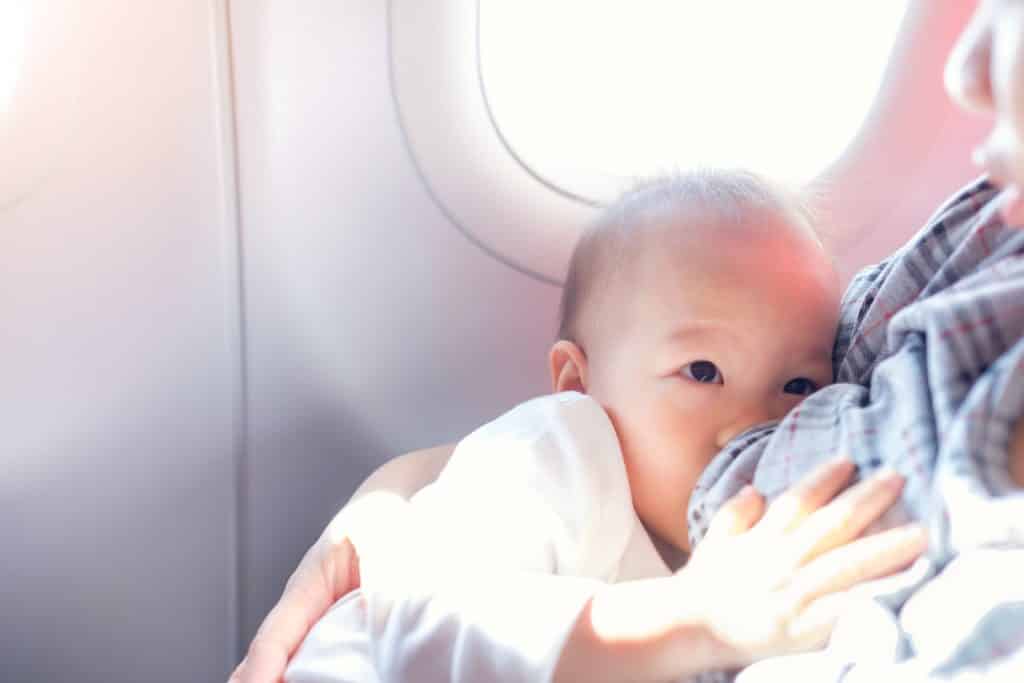
The altitude changes can be really troublesome for little ones (and even some adults). To help relieve the pressure, your kiddo should suck or chew on something during takeoff and landing.
Here are a few recommendations based on age:
Babies: Whether your baby is nursing or bottle-feeding, be sure to feed your baby during takeoff and landing. If your baby takes a pacifier/dummy, offer this.
Toddlers and preschoolers: Offer soft and chewy candies like a starburst, hard candy, or lollypops. (Ask them to suck the hard candy or lollypops, not bite them).
Older kids: If your older child can chew gum, offer it. If not, offer hard candy, lollypops and/or chewy candies.
It can be a little challenging to do so, but you will want to time this well; otherwise, the chewing/sucking will be done before the ascend or descend.
-
Avoid the aisle seat for little ones
If you are flying with kids, you have to have eyes on them all the time! Little feet or hands can stick out when the food and beverage cart comes by, or reach for hot beverages while they’re in the aisle seat. Avoid preventable accidents like these by putting babies and toddlers in the middle or window seat.
-
Beware of germs
Babies and kids love to touch everything, so as soon as you get to your seats, wipe everything down thoroughly.
If your older children are going to the bathroom, make sure they have shoes on! That may not just be water on the bathroom floor!
-
Ignore whining adults
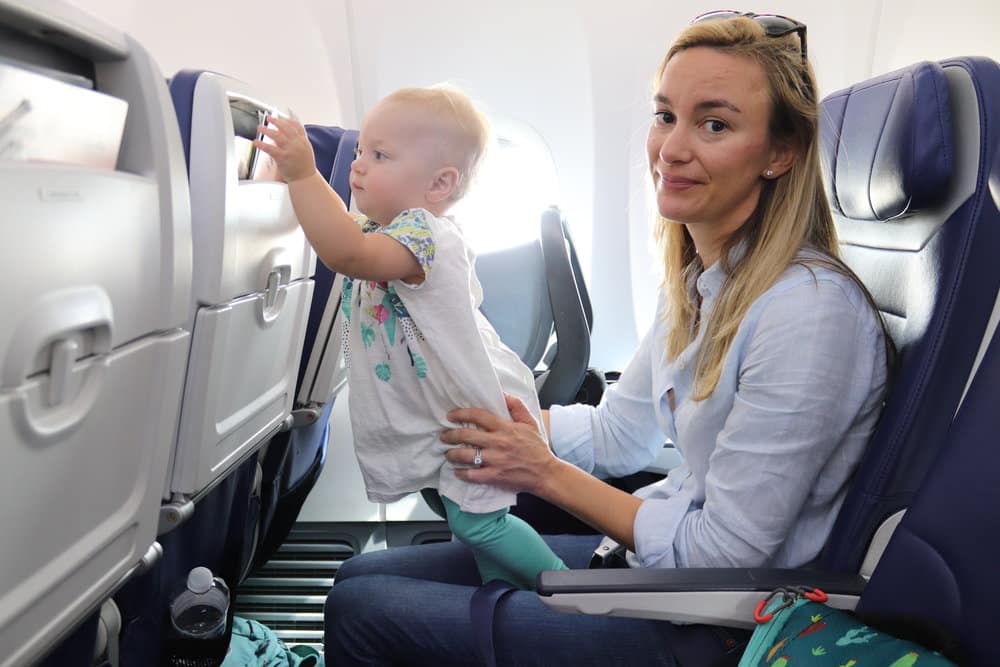
Your baby will cry if he/she is hungry or tired or wet, with no regard to other passengers.
While most passengers are remarkably understanding, you may occasionally run into someone who complains about a crying baby or a loud toddler. This can be terribly annoying, but remember that if you are trying, most people will empathize with you. The best way you can handle disagreeable people is to not engage—just focus on your child.
